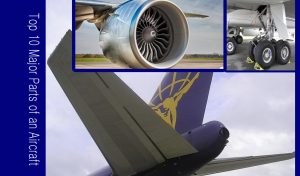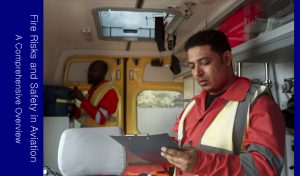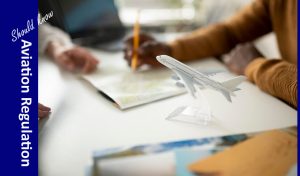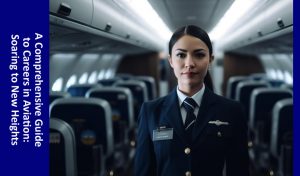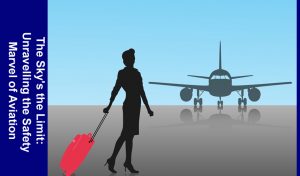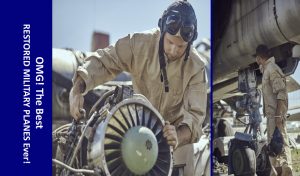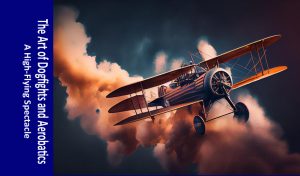Aerobatic flying is a specialized form of aviation that involves performing precise and often dramatic maneuvers with an aircraft. These maneuvers are typically executed in three dimensions and require a high level of skill and training. Aerobatic flying is often seen in airshows, competitions, and military training, and it can be both thrilling and visually impressive. Aerobatic Flying includes rolls, loops, spins, and inverted flight. Aerobatics can be a fun and challenging way to fly, but it is important to take the Safety in Aerobatic Flying.
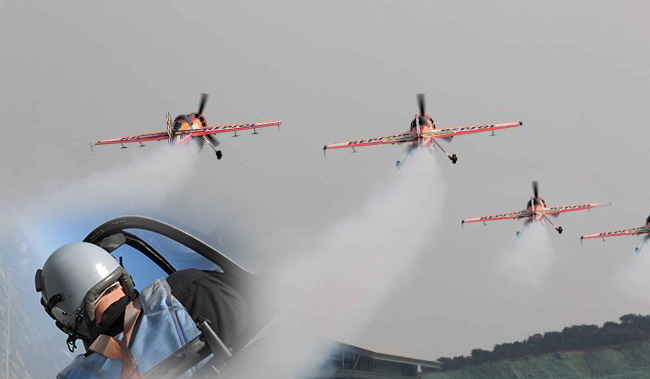
Here are key aspects of aerobatic flying, including safety considerations, training, equipment, and procedures:
1. Safety in Aerobatic Flying:
Safety is paramount in aerobatic flying due to the high-risk nature of the maneuvers involved. Pilots must prioritize safety at all times. Key safety considerations include:
- Training: Proper training is essential for aerobatic pilots. They must undergo comprehensive aerobatic flight training to learn the techniques, limitations of their aircraft, and emergency procedures.
- Physical and Mental Fitness: Pilots should be in good physical health and maintain mental alertness during flights. The high G-forces experienced during aerobatics can be physically demanding.
- Aircraft Maintenance: Regular and meticulous aircraft maintenance is crucial to ensure the aircraft is in optimal condition for aerobatics.
- Safety Equipment: Pilots should wear appropriate safety equipment, including a parachute, helmet, and a G-suit, which helps mitigate the effects of high G-forces.
- Weather Conditions: Aerobatic flights should be conducted in favorable weather conditions, with clear skies and low winds, to minimize the risk of accidents.
- Emergency Procedures: Pilots must be well-versed in emergency procedures, including how to recover from unusual attitudes or spins.
2. Aerobatic Training:
Aerobatic training is specialized flight practise that prepares pilots to securely and successfully perform aerobatic maneuvers in an aircraft. This training is important for people who need to interact in aerobatic flying, whether for leisure purposes, airshows, opposition, or even for military or stunt flying roles. Aerobatic training involves several key additives:
- Ground School: Before taking to the skies, aspiring aerobatic pilots typically start with ground school instruction. In this phase, students learn the theoretical aspects of aerobatics, including the physics and aerodynamics behind the maneuvers, aircraft limitations, safety procedures, and emergency protocols. Ground school provides the necessary knowledge base for understanding and executing aerobatic maneuvers.
- Flight Instruction: The core of aerobatic training involves flight instruction. Students receive hands-on training in an aerobatic-capable aircraft with a qualified aerobatic instructor. The flight training typically progresses through different stages:
- Basic Maneuvers: Students start with fundamental aerobatic maneuvers, such as loops, rolls, and spins. These maneuvers teach the basics of aerobatic control inputs and build confidence.
- Intermediate and Advanced Maneuvers: As students become more proficient, they move on to more complex and challenging aerobatic figures, including Cuban eights, hammerheads, Immelmann turns, and inverted flight. These maneuvers require precise control inputs and a deeper understanding of aircraft dynamics.
- Safety Procedures: Throughout the training, safety procedures are emphasized. Students learn how to recover from unusual attitudes, spins, and other potentially dangerous situations that can arise during aerobatic flying.
- Solo Practice: After gaining competence in the presence of an instructor, students are gradually allowed to practice aerobatic maneuvers on their own. Solo practice is an essential step to build confidence and competence in executing maneuvers independently.
- Progressive Training: Aerobatic training typically follows a progressive approach, where students start with basic maneuvers and progressively work their way up to more advanced and intricate aerobatic figures. The complexity of the maneuvers increases as students gain proficiency.
- Safety Emphasis: Safety is a fundamental aspect of aerobatic training. Instructors emphasize the importance of proper technique, altitude awareness, airspeed control, and G-force management to minimize the risk associated with aerobatic maneuvers.
- Aircraft Selection: The choice of aircraft for aerobatic training is crucial. Training aircraft are often specifically designed for aerobatics, with reinforced airframes and responsive controls. Common training aircraft include the Extra 300, Pitts Special, and Citabria.
- Certification: Depending on the country and the type of aerobatics a pilot intends to perform, there may be specific certifications or ratings required. For example, the International Aerobatic Club (IAC) in the United States offers a series of aerobatic pilot proficiency levels that pilots can achieve through testing and competition.
3. Equipment for Aerobatic Flying:
Aerobatic flying requires specialized equipment to asure the safety and performance of both the aircraft and the pilot. Here are some of the essential equipment and components used in aerobatic flying:
- Aerobatic Aircraft: Aerobatic airplanes are specifically designed and built to withstand the stresses of aerobatic maneuvers. They often feature a reinforced airframe, stronger wings, a responsive control system, and a more powerful engine. Popular aerobatic aircraft include the Extra 300, Pitts Special, Sukhoi Su-26, and Christen Eagle.
- Safety Gear:
- Parachute: Aerobatic pilots wear parachutes as a primary safety measure. In the event of an emergency or loss of control, the pilot can eject from the aircraft and use the parachute to descend safely.
- Helmet: A helmet is worn to protect the pilot’s head in the event of turbulence or unexpected G-forces.
- G-Suit: A G-suit, also known as an anti-G suit, helps mitigate the effects of high G-forces on the pilot’s body by applying pressure to the legs during high-G maneuvers. This helps prevent G-induced loss of consciousness (G-LOC).
- Aerobatic Harness: Specialized harnesses are used to secure the pilot firmly in the cockpit during aerobatic maneuvers. These harnesses provide additional support and safety during high-G maneuvers.
- Avionics:
- **Aerobatic aircraft may be equipped with specialized avionics to aid in navigation and control during maneuvers. This includes altitude indicators, airspeed indicators, vertical speed indicators, and gyroscopic instruments to help maintain precise control during maneuvers.
- Smoke System: Many aerobatic aircraft are equipped with smoke systems that release colored smoke during maneuvers. This enhances the visual impact of aerobatic displays in airshows and competitions.
- Dual Controls: Some aerobatic training aircraft are equipped with dual controls to allow an instructor to take control if needed during training sessions. Instructors can override the student pilot’s inputs for safety.
- Roll Cage: In certain aerobatic aircraft, particularly in the cockpit area, a roll cage or crashworthy structure may be installed to enhance pilot safety in the event of an accident.
- Fire Extinguisher: A fire extinguisher is often installed in the cockpit for quick access in case of an onboard fire.
- Communication Equipment: Radios and intercom systems are used for communication between the pilot and any passengers or crew members. Clear communication is essential for coordination during aerobatic displays.
- Instrumentation: In addition to standard flight instruments, aerobatic aircraft may have specialized instrumentation for tracking and recording data related to aerobatic maneuvers. This can be useful for training and performance evaluation.
- Emergency Locator Transmitter (ELT): ELTs are used to transmit distress signals in the event of an emergency or crash. They help search and rescue teams locate the aircraft quickly.
- Weight and Balance Equipment: Aerobatic aircraft must maintain precise weight and balance to ensure stability during maneuvers. Equipment such as weight scales and balance equipment is used to calculate and adjust the aircraft’s center of gravity.
4. Aerobatic Procedures:
Aerobatic procedures involve a structured and precise sequence of actions and maneuvers that aerobatic pilots follow to execute aerobatic displays or routines safely and effectively. These procedures ensure that aerobatic maneuvers are performed with precision, coordination, and, most importantly, safety. Here are some key aspects of aerobatic procedures:
- Briefing:
- Before any aerobatic flight or display, a comprehensive briefing is conducted. This briefing involves all participants, including the pilot, any passengers, and ground personnel.
- During the briefing, the following elements are typically covered:
- Weather conditions and forecasts, including wind speed and direction.
- Aircraft performance limitations and weight and balance considerations.
- The specific aerobatic routine or maneuvers to be performed, including their sequence.
- Safety procedures, including emergency protocols and bailout options.
- Communication frequencies and procedures.
- Pre-Flight Inspection:
- The aircraft undergoes a thorough pre-flight inspection to ensure that it is in optimal condition for aerobatic maneuvers.
- Pilots and ground crew check all critical systems, control surfaces, and safety equipment.
- Aircraft Setup:
- Depending on the type of aerobatic routine to be performed, the pilot may need to make adjustments to the aircraft’s configuration, such as setting the smoke system or adjusting the cockpit harnesses.
- Aircraft weight and balance calculations are double-checked to ensure they are within safe limits for the intended maneuvers.
- Aircraft Warm-Up:
- The aircraft’s engine and systems are typically warmed up to operating temperatures before starting any aerobatic maneuvers. This ensures that the aircraft is operating at peak performance.
- In-Flight Execution:
- The actual execution of aerobatic maneuvers follows a planned sequence, with each maneuver performed in a precise and coordinated manner.
- The pilot uses control inputs to initiate and complete each maneuver, paying close attention to altitude, airspeed, and G-forces.
- Smooth control inputs are essential to maintain precision and safety throughout the routine.
- Altitude Awareness:
- Aerobatic pilots must maintain a high level of altitude awareness to prevent unintentional ground contact. Altitude is critical, especially during maneuvers close to the ground.
- Altitude references, such as specific markers on the ground or the horizon, are used to gauge altitude during maneuvers.
- Airshow Centerline:
- For airshow performances, pilots aim to keep their maneuvers centered along an imaginary line known as the “airshow centerline.” This ensures that the audience has the best view of the display.
- Communication:
- Clear and concise communication is crucial during aerobatic displays. Pilots often use radio communication with ground control or other participating aircraft to coordinate their positions and maneuvers.
- Aerobatic teams may use formation flying and hand signals to communicate within the team.
- Smooth Transitions:
- Between maneuvers, pilots execute smooth transitions to maintain the flow of the display. These transitions can involve turns, climbs, or rolls, depending on the routine.
- Post-Flight Debriefing:
- After the flight or display, a debriefing session is conducted to review the performance.
- Pilots and ground crew discuss what went well, areas for improvement, and any safety concerns.
- Safety:
- Safety is the top priority in aerobatic procedures. Pilots are trained to recognize and respond to any unexpected situations or emergencies, and they are prepared to abandon a routine or maneuver if it becomes unsafe.
- Regulatory Compliance: Aerobatic displays are subject to regulations and guidelines set by aviation authorities. Pilots must ensure that their displays comply with these regulations to ensure safety and airspace coordination.
In summary, aerobatic flying is a highly skilled and thrilling form of aviation that demands strict adherence to safety protocols, comprehensive training, specialized equipment, and precise procedures. Pilots who engage in aerobatics must prioritize safety above all else to mitigate the inherent risks involved.
